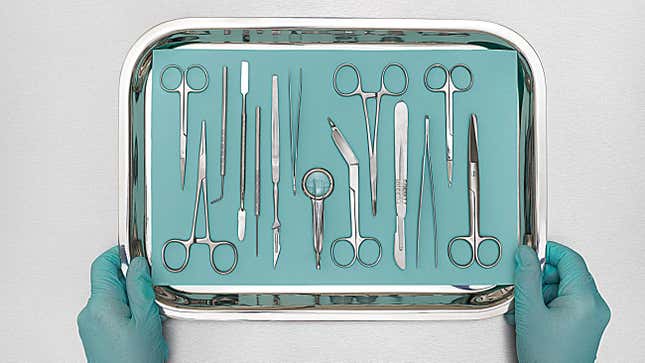
On January 1, 2022, California opened up an application for survivors of forced sterilization to apply for reparations from a $4.5 million fund established by a law passed in 2021. The law distinguished itself from similar laws in other states by extending beyond those who had been sterilized under 20th-century eugenics programs to also offer reparations to survivors of contemporary forced sterilization—many of whom are incarcerated people. But, according to a new report from Rewire, as of October 24, of the 510 people who applied for reparations, just 108 have been accepted, the California Victims Compensation Board told the outlet. The application will close at the end of December.
California’s eugenics program—considered one of the most ruthlessly effective in the U.S. during a period when state-funded eugenics programs were rampant—lasted from 1909 to 1979, in which thousands were sterilized, most of whom were targeted for being disabled, Black, Indigenous, or for just being poor. Between 1919 and 1952, at least 20,000 people were sterilized in state institutions alone. And, despite a 2014 law banning the forced sterilization of incarcerated people in California, one report found doctors sterilized nearly 150 incarcerated women between 2006 and 2010. The 2020 documentary Belly of the Beast reported that prison records showed close to 1,400 people may have been subjected to forced sterilizations in state prisons between 1997 and 2013.
Jennifer James, an associate professor at the University of California, San Francisco, told Rewire the demands of the application are inaccessible to many survivors who try to use it—particularly the demand for rigorous documentation of their experience: “A lot of people don’t know what happened to them. They were never told. Especially people who were incarcerated, who were sterilized—if they continued to be incarcerated throughout their childbearing years, they might not have had a way to ever know.” Some of the sterilizations reportedly were carried out at a California hospital (Madera Community Hospital) that’s since closed.
James further told Rewire that even deciding to apply for reparations from the state isn’t simple for forced sterilization survivors: “That is a considerable burden placed on individuals who have been through a trauma at the hands of the state, [and] may not trust the state because of that, many of whom have limited literacy, and many of whom have limited access to technology,” she said. One incarcerated forced sterilization survivor who applied for—and was denied—reparations from California told Rewire that the involuntary hysterectomy she received in prison “felt like I had been raped all over again, knowing they had violated my body.” When her application was denied, she told the outlet she was “upset, confused once again,” and had “so many questions, like how can they do this to me and make it my fault?”
The California Victims Compensation Board did not immediately respond to a request for comment from Jezebel about its application and the vetting process for applicants; if acceptance of just 108 forced sterilization survivors is a lower figure than the board accepted; and any efforts to reach the estimated hundreds more survivors who haven’t yet applied for the program before Dec. 31.
In addition to California, North Carolina and Virginia have also established reparations programs for survivors of the states’ 20th-century eugenics programs. Earlier this year, Utah said it’s trying to locate forced sterilization survivors, not for reparations, but for… apologies.
Across the country, at the height of national support for eugenics in the early 20th century, at least 70,000 people in 32 states were subjected to involuntary sterilizations. This legacy persists: As recently as 2020, an ICE doctor allegedly performed unwanted hysterectomies on migrant women at a detention center in Georgia. And, last year, the National Women’s Law Center (NWLC) and Autistic Women and Nonbinary Network published a report showing 31 states and the District of Columbia continue to allow nonconsensual sterilizations for disabled people, incarcerated people, and migrants, through policies that afford judges significant leeway to decide whether someone can or can’t consent to being sterilized. Utah and California are among those 31 states.

